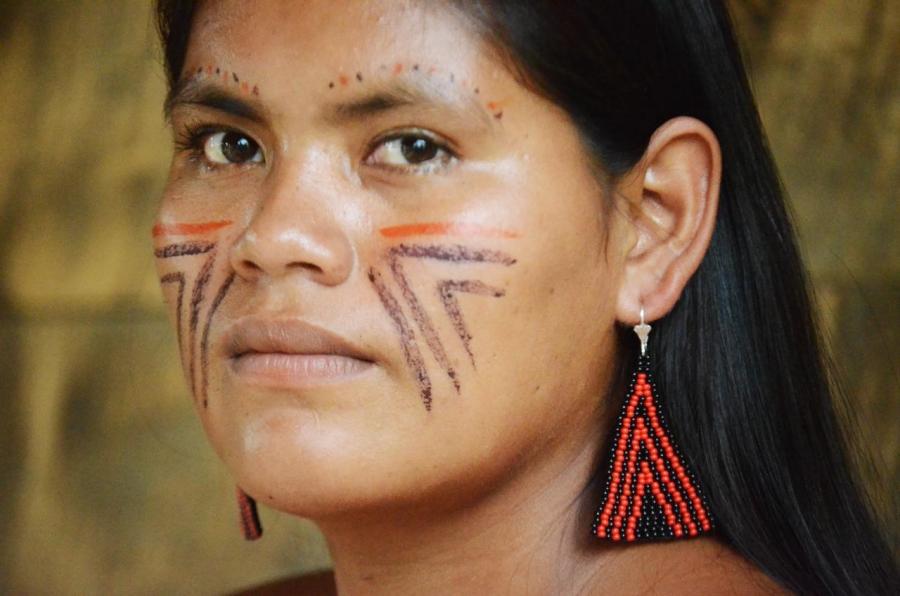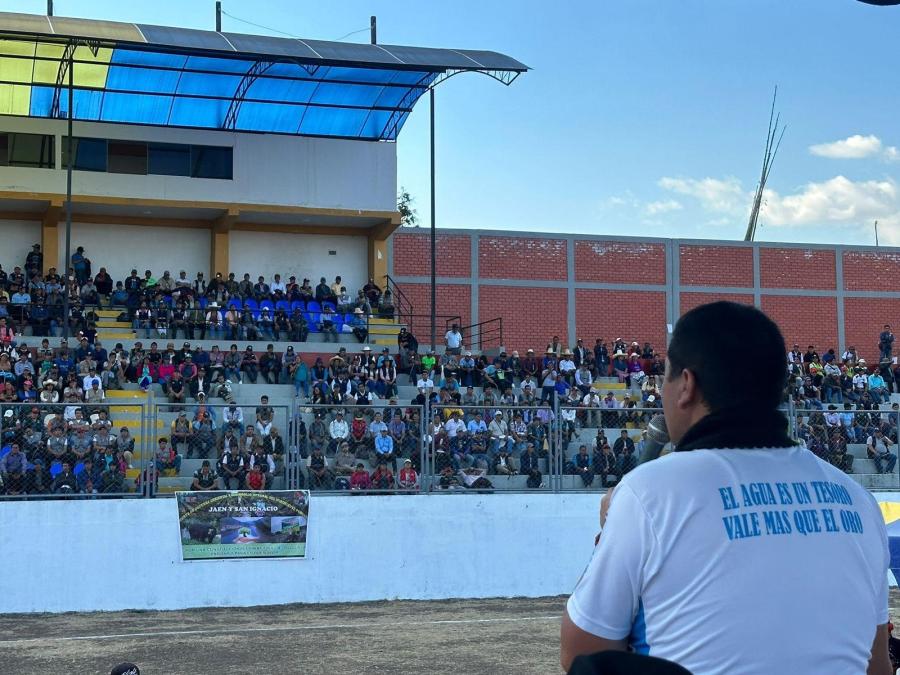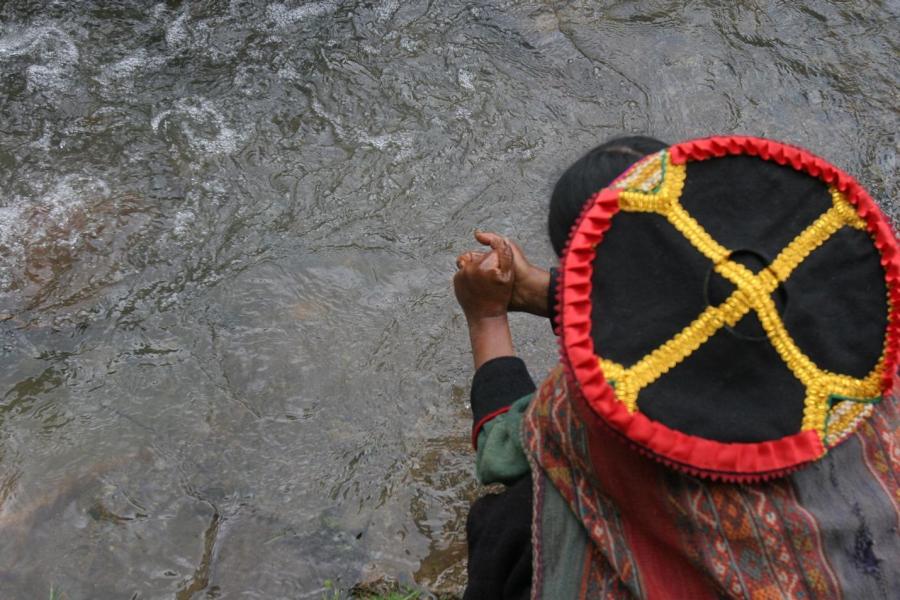The Amuesha community of Tsachopen has often been a barometer for Peruvian native communities, indicating what was to befall them. On 20 October 1981, the government of Fernando Belaunde Terry arbitrarily and illegally annulled the land title of Tsachopen in order to return those lands to the local Franciscan Mission. This set off a wave of protest by community members, support groups, and several of Peru's leading bishops.
Tsachopen was founded as a cluster of Amuesha families who, seeking refuge from the encroaching German colonists, settled around the Franciscan mission at Quillazu almost 100 years ago. Despite a land title awarded to the mission "and to the local Neophytes" in 1905, the 1226 hectare property evolved into the mission's own feudal estate, much like those established by the Spanish throughout the Andean region. The missionaries, generally Spanish nationals, relied on Amuesha labor to manage their cattle and coffee operations; exchange the Amuesha planted subsistence gardens on the estate and received religious instruction. When the Church needed capital for new buildings, it sold timber rights to a local German-owned lumber firm and rented parts of the land to Andean immigrants.
By 1960, the 150 Amuesha families found themselves squeezed between the expanding holdings of the renters and the timber concessions. That same year when the padre, Ignacio Urreytavizcaya, threatened to evict each family from their garden sites if they did not buy the land, the entire community petitioned the Peruvian President to defend their rights to the land. It was the first time a native community of the Peruvian jungle had made such a demand. Within the year, the Peruvian government ruled that the lands belonged as much to the Amuesha as to the Vicoripto Apostolico of San Ramon. It was a landmark decision.
However 15 years passed before the Amuesha were awarded a land title to 764 hectares (No. 0023-76) under the new Native Communities Law (No. 20653). Those years were difficult for the community - expensive court battles with the Mission, violent confrontations with the mission-backed renters, threats of physical and spiritual retribution from the mission and local authorities. The land title, however, did not impress the Church.
Armed with a power of attorney from the Bishop of San Ramon, the mission priest initiated a lawsuit against the Agrarian Reform Program to recover the lands. In spite of the priest's efforts to divide the community, and the support he received from local authorities and elites, in December 1978 the lad judge of Tarma ruled in favor of the community. In view of the defeat, and the mounting pressure within the Church, the local bishop agreed on 2 December 1978 to the following points:
1) to end the legal action against the community;
2) to publically turn over to the community a 26 hectare parcel of community land which was in possession of the priest and was the object of the lawsuit;
3) to remove the priest, Ignacio Olleytavizcaya, from the mission.
The bishop, however, failed to appear before the community on the appointed day. He later sent word that hew was postponing the event because the priest had already appealed the lower court decision. Even when the highest court, the Tribunal Agraria, ruled in favor of the community in May 1979, the bishop refused to honor his promises. The community, intimidated by the power of the Church and internally divided, refrained from taking back their land; the priest remained in possession of the 26 hectares.
On October 20, 1981, Carlos Estete, Director of the Agrarian Reform Program under the new Belaunde government, signed a degree annulling the title to all 764 hectares of Tsachopen. To justify such a decree, the Director cited a petition from the Bishop of San Ramon asking that the community land title be considered, and document which was supposedly signed by 43 members of the community agreeing to return the lands to the mission. By annulling this land title, the Peruvian government chose to ignore the decisions of its highest land claims court, the guarantees given by the Native Communities Law No. 21175, and the Constitution in articles No. 161 and 163, and the most telling of all failed to notify the community that it was even considering such action.
The community leaders, with assistance from the Commission Pro-Defensa de Tierras Nativas in Lima, are attempting to overturn this decree.
The issues in this case arouse grave concern among those working with and supporting the Peruvian Native Communities. If the current government is willing to trample its own laws, and the decisions of its highest courts, to deny land rights to Amuesha Indians in favor of the Catholic Church, what does this mean for other native communities living in areas coveted for development projects, commercial lumbering, or any other activities? Is Tsachopen once again acting as a barometer for things to come?
Article copyright Cultural Survival, Inc.



